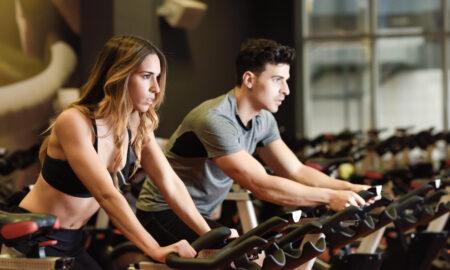What do you do about your workouts when you’ve been experiencing training plateaus for months on routines that used to bring you gains? You have a training plan ready, and you follow it. If you wing it, using whatever weight you feel like at each workout, you’ll become overtrained. The symptoms of overtraining include decreased performance due to less strength, fatigue, sleep disturbance, lack of desire to train, irritability, mood swings and injuries. Overreaching, a lower level of overtraining, requires three weeks or less to recover from. Overtraining requires three weeks to many months to recover from.
You cannot maintain a peak forever. That’s not how the body operates. Olympic weightlifters, Olympic athletes and elite football players follow more complex periodization programs than most. Powerlifters follow a somewhat less complicated training plan for specific reasons. The average trainee doesn’t need that complex a plan.
Training can be varied or manipulated by volume (sets and reps), intensity (weight) or both. Traditional variations of cycling, or periodization, manipulate intensity. A cycle begins with a low percentage of your maximum weight on a particular lift. Each week the intensity, or weight, increases.
For example, the first week your squats could start at 60 or 65 percent of your max squat. If you want to reach a 365-pound squat, you begin at 220 pounds. You could easily handle that amount of weight for 10-plus reps. Each week you increase the weight by 5 percent and reduce the number of repetitions. That continues until you reach 365 pounds. Then you take a week off training to recover. The next cycle could start with a new maximum-lift target that is 5 to 10 percent higher. Each cycle builds on the previous one, and the maximum weight handled in each lift predictably goes up every few months, year after year.
Cycling by volume—a concept originating in the former East Germany and Soviet Union—is for more advanced trainees. The idea was, Why go down in weight when you’ve spent so many years building the strength up? That type of training doesn’t let the weight drop below 80 to 85 percent. Rather than decreasing the weight, you drop the number of repetitions. So during the earlier weeks of the training cycle, instead of performing squats with 80 percent for two to three sets of six reps, you squat at 80 percent for two to three sets of two to three reps. When you perform fewer reps, your body can recover easily. It would take a short period to build the reps and then increase the weight and be back to 100 percent. Then you’d set another target-weight for the next training period or, for athletes near your career peak, you could simply repeat the cycle again and again, thus remaining near your peak.
A training plan can be divided into six-, eight- or 12-week cycles. The six-week cycle will bring you back to a peak very quickly. That may be the best schedule for average trainees. New trainees may find that the traditional 12-week cycle builds a solid base.
Many years ago powerlifting great Ed Coan told me that he had to use a 14-week training cycle to reach a peak. The weekly jumps on a shorter cycle were too large for him. For those who don’t remember, Ed Coan squatted 968 pounds at a bodyweight of 217. He originally trained in a traditional powerlifting design: One day he did heavy squats and light bench. A second day was a deadlift day. The third day was heavy bench and light squats. Coan had small tears of the pecs, biceps and hamstrings. He dropped the light squat and light bench workouts to allow for greater recovery. Once he did that, the injuries stopped, and he went on to squat more than 1,000 pounds and deadlift more than 900.
Try cycling your big lifts—squats, bench presses, dumbbell rows or seated cable rows. Don’t bother varying small lifts like pushdowns or leg curls. If you’ve trained all your life and plan to continue training the rest of your life, take one year to try this way of training. It may keep you training longer and more happily. IM
Editor’s note: Visit www.SoftTissueCenter.com for reprints of Horrigan’s past Sportsmedicine columns that have appeared in IRON MAN. You can order the books, Strength, Conditioning and Injury Prevention for Hockey by Joseph Horrigan, D.C., and E.J. “Doc” Kreis, D.A., and the 7-Minute Rotator Cuff Solution by Horrigan and Jerry Robinson from Home Gym Warehouse, (800) 447-0008 or at www.Home-Gym.com.




















You must be logged in to post a comment Login